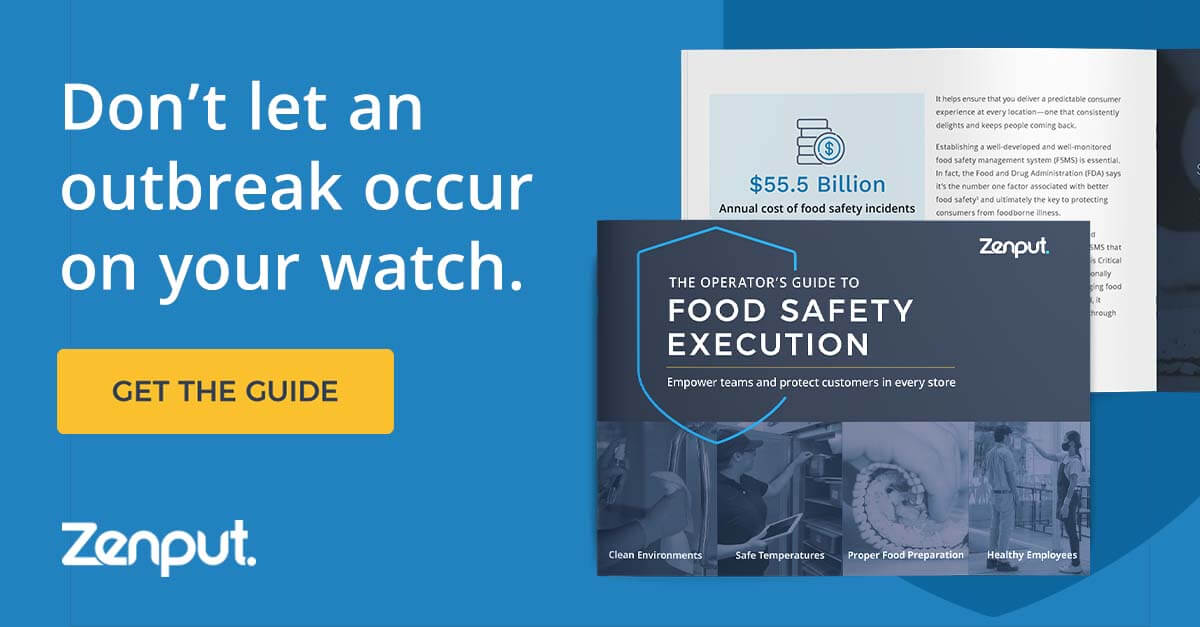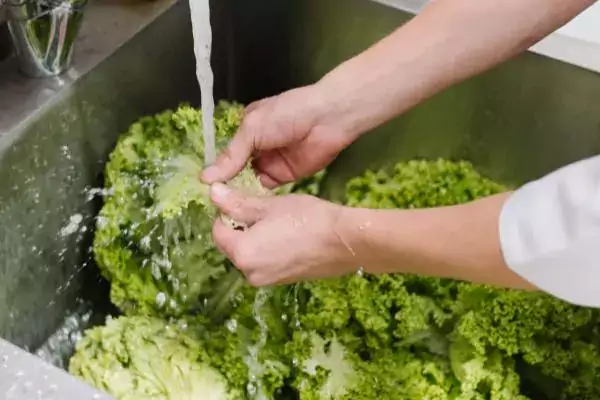Your staff is responsible for ensuring that every meal prepared at your establishment is a safe meal. Whether cooking and serving complex recipes in-house or simply heating and packaging prepared items to-go, employees are the last line of defense between customers and foodborne illness, especially during the food preparation process. According to Food Safety News, consumer trust in the industry’s ability to meet food safety expectations is fairly low. Consumers who feel confident in the safety of your food products will undoubtedly choose your business over others.
One guaranteed way to strengthen food safety standards is to implement a Food Safety Plan. Food safety plans should not overlook staff training, sanitization and personal hygiene, pest control, and waste disposal, but should integrate these important functions into the plan at every stage. Here is how digitizing your food safety processes can simplify your approach while improving the quality of your food safety measures.

What Is a Food Safety Plan?
A food safety plan (FSP) outlines a systematic approach to the identification of food safety hazards that must be controlled to prevent or minimize the likelihood of foodborne illness. It is a requirement under FDA regulation.
An FSP meticulously describes activities and tasks that safeguard food, from the initial stages of manufacturing and production through transportation, processing, and holding. Each operator in the food lifecycle will have a different set of food safety protocols for their FSP according to applicable hazards at the specific stage, although there will be many overlapping safety measures.
By law, FSPs must be developed by an internal or external Preventive Controls Qualified Individual (PQCI). Plans must be updated whenever operational changes occur or at a minimum of 3-year intervals. In addition, it is imperative for businesses to keep records of all incidents and procedure implementations (in short, everything) as proof of having an effective FSP in place.
Thorough record-keeping by each business is compulsory. This allows efficient oversight in food safety compliance laws on an ongoing basis and reduces the risk of unsafe products. It ensures food safety responsibility is applied to every stage-specific food handler.
Every food safety plan must include a hazard analysis for all food processes and a preventive control implementation strategy, including but not limited to process controls, sanitization, and allergen controls. There needs to be a monitoring system in place to ensure strategies are being implemented effectively. There also has to be a predetermined recording procedure and corrective action for when controls are not efficiently executed.
Each FSP document should include verification of proper implementation and should be validated by evidence that preventive controls are legitimate. Lastly, every document also needs a prescribed recall plan for emergency situations.

How to Create a Food Safety Plan Based on HACCP
From raw material production to consumption of the finished product, HACCP implements science-based analysis and controls to ensure food safety. Before creating a food safety plan, appoint a committed management team familiar with the products and processes, who understand food safety principles, and who can take corrective action fast. Keep in mind that separate HACCPs will be required for every product or food preparation station. For example, a sushi station will require completely different food safety protocols than that of a bakery or hot food section.
Initial steps in developing an FSP include identifying all on-site food-related areas, drawing up a diagram or flowchart that covers all the food handling processes in each area and verifying the accuracy of this information on the production floor.
Once all areas have been identified, a thorough hazard analysis should be conducted considering the risks at every stage of food handling and the severity of consequences. Identify preventative measures for each step. Where and when will each critical control point be applied? What is the critical limit to ensure that food is safe? Exceeding these critical limits will indicate a safety hazard. For example, cold storage has temperature limits that cannot be exceeded in order for food to remain safe.
The monitoring and inspection of each critical control point need to be accurate, fast, and simple to execute. The FSP should indicate monitoring intervals as well as recording procedures and specify corrective action procedures required when breaches occur.
The last steps in creating the FSP involve verification, evaluation, and revision. The plan needs to make room for verification methods and monitoring compliance with sample analysis records. Any time that manufacturing processes or products are amended, the FSP needs to be reviewed or changed. An annual review is recommended. However, it is compulsory to review the FSP every three years, even if no changes have taken place during that time.

Elevating Food Safety in Every Store
Digitizing your monitoring system will help to minimize risks and consistently maintain high food safety standards. Track all of your food safety processes in one central hub and cut down on food waste (and costly errors) by eliminating paper-based systems while strengthening consumer confidence in your brand.
Get started with Zenput to create a strong process of tracking all food safety-related activities: from ingredients expiration details to equipment temperature monitoring to food safety audits and temp logs.
Zenput helps operators create and sustain robust food safety plans to make sure they meet or exceed industry standards every time. Since all Zenput functions are automated, digitally recorded, and instantly compiled into user-friendly reports that are easily accessible in a single hub, the platform minimizes excessive admin work that comes with implementing, tracking, and logging food safety compliance controls. Real-time notifications and digital checklists assist in the monitoring of critical control points. All this data is accessible by operators and managers in real-time from a computer or mobile device.
Download The Operator’s Guide to Food Safety Execution to learn more about each critical step of executing strong food safety practices in all of your stores.
Subscribe to our blog
You are now subscribed!



